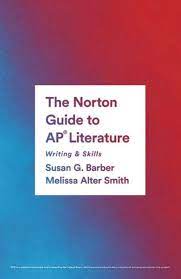Susan’s note: This post is written by Adrian Nester who put some thoughts on paper after the pilot reading. I have added a few ideas which are in italics and a teaching point for each path. Before launching into this, I want this sophisticated point (haha) to guide your approach to Row C in the classroom: Do not worry about the sophistication point. Whether they get it or not is a non-issue to me. Of course I want them to do well on the exam and want to prepare them as best as I can, but I will not let myself stress out about it. Nor should you. Teach your students to write essays that explore tensions and complexities within a text, interpret a text within broader contexts, accounts for alternative interpretations, and uses a vivid and persuasive style. If we are teaching these things, our students will not only be prepared for the exam but will more importantly be prepared for future academic writing. My apologies – this was more than one point; this is pretty much like a day in my class.
(This post was originally published on APLitHelp.com in February of 2020).
The sophistication point…ah, the pesky sophistication point…do teachers even need to worry about it? Are only the best writers going to get this point? Is trying to teach sophisticated writing a futile effort? Well, honestly, who knows how many sophistication points will be earned on the exam in May, but there do seem to be several entry points to understanding the sophistication point a little more.
One thing is for sure, to receive the sophistication point, the students have to fully do the work for the reader. It would be hard to get the sophistication point if a writer starts with one thesis and then has a shift in focus to another thesis/claim. This could be an example of the 1-4-0 type of score.
There are four enumerated ways to earn the sophistication point.
1. Identifying and exploring complexities or tensions within the poem/passage.
Paradox, juxtaposition, and irony all seem to be possible vehicles to seeing complexities and tensions in a work. If a student is able to find one of the tensions in a work and fully unpack it they could be on their way to the sophistication point.
Teachers may want to scaffold students to seeing more complexities and tensions in a work by asking: How does the title/epigraph/last line/shift/etc. complicate the meaning of the text?
This path is the one I struggle with on the sophistication point because a prompt typically asks students to address the complexities within the text. So if students are fully doing this to answer the prompt, does that not fulfill the complexity point? I’ve really got nothing on this path to sophistication and am eager to see more examples of this path at the reading this summer. (I may be wrong because the pilot reading was so fast, but I don’t think I saw any samples for sophistication for this path but am very likely wrong about this).
Even though we were REPEATEDLY told to go back to the rubric to justify our decisions which we were all very committed to doing, I think this is the type of analysis that when I read it, I want to tell that student, “Just keep doing this and I’m going to stay out of your way.” Or maybe I should say, “ Would you like to teach me how to write?”
My advice may be frustrating for you: look at the samples on the exam page. that were awarded the sophistication point for exploring complexities and tensions.
2018:
- Question 1 – Sample J
- Question 2 – Sample E maybe (wording on this is unclear)
- Question 3 – Sample I
2019:
- Question 1 – Sample HH, Sample OO
- Question 2 – Sample GG
- Question 3 – Sample DD, Sample J
Teaching Point: Encourage students to use transitions such as: however, even though, consequently, at the same time, nevertheless, alternatively, in contrast, etc. These words position students to explore complexities and tensions within a passion.
2. Illuminating the student’s interpretation by situating it within a broader content.
A broad sweeping cliche dropped in at the beginning of a response, such as “since the beginning of time,” is not going to do it here. Random historical references also go in this category. Just because a poem was published in (insert significant historical year) does not necessarily mean that placing it in this historical broader context will work. The context has to “fit”.
The context must work “in service to” the student’s argument that is developed and sustained throughout.
The main point about the next three pathways (all of the pathways really) is the additional note at the bottom of the rubric. It reads: “This point should be awarded only if the sophistication of thought or complex understanding is part of the student’s argument, not merely a phrase or reference.” The broader context, alternative interpretations, and vivid and persuasive writing is part of the student’s argument (emphasis mine) and not two or three sentences sprinkled throughout or do not advance the argument.
My students recently wrote on Under the Feet of Jesus, and I awarded the sophistication point to Sample CC below. I’ve highlighted the parts of the essay which I thought aided this student getting the point.
Under the Feet of Jesus sample – sophistication with broader context
Teaching Point: Applying different lens from literary criticism is a good way for students to begin to explore works within a broader context.
3 . Accounting for alternative interpretations of the poem.
Not staking a claim (“The poem could mean this…or maybe that…”) is not the same as accounting for alternative interpretations.
Well done alternative interpretations will often use conditional language that acknowledges other interpretations while continuing to make a stand. This could sound something like “Some people may see The Landlady as _____________; however, ____________.” or “Perhaps the unnamed landlady __________________.”
There are many rooms in the house of right, but there are some definite wrongs. If an interpretation can be defended with multiple examples throughout the text, it’s most likely valid. If an interpretation is based on a “feeling” that can’t be supported in the text or an interpretation based on one phrase in the text, it’s most likely garbage not valid.
Teaching Point: Silent discussions are a great way for students to explore other students’ thoughts and interpretations of a text.
4. Employing a style that is consistently vivid and persuasive.
Well, you are on your own teaching this…but I think I know for sure that just using the word “titular” one time in the opening paragraph is not going to do it. (Please don’t take this off your SAT prep list, but readers grew amused at just how many students used this on “The Landlady” as well as so many Q3 responses.)
‘Consistently’ really seems to be a keyword in this point.
These essays are few and far between, and when I read them, I am always amazed at what a student can do on a cold read in 40 minutes. See Sample AA from Under the Feet of Jesus below where I awarded the sophistication point for vivid and persuasive writing.
Teaching Point: Have students experiment with using figurative language in their writing; this when used consistently – in my humble opinion – makes for vivid writing.
Under the Feet of Jesus sample – sophistication through vivid and persuasive writing

At six-years-old Adrian Nester’s oldest son was asked to describe what she likes to do for a Mother’s Day project. His response: drink water and grade papers and both of these things are true. Adrian has just completed her 16th year as an educator, but instead of doing the “same-old-thing”, she is ready to throw out the playbook. While Adrian is not drinking water and grading papers, she enjoys traveling, spending time with her family, reading, and playing sports. Read more about Adrian’s journey on her blog The Learning Curve.

Susan Barber teaches at Grady High School in Atlanta, Georgia. In addition to reading, writing, and investing in the next generation, she loves watching college football with her family especially when Alabama is playing.












